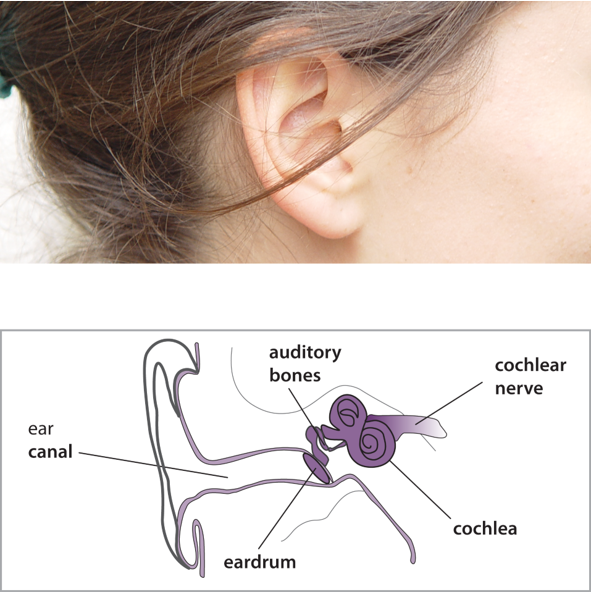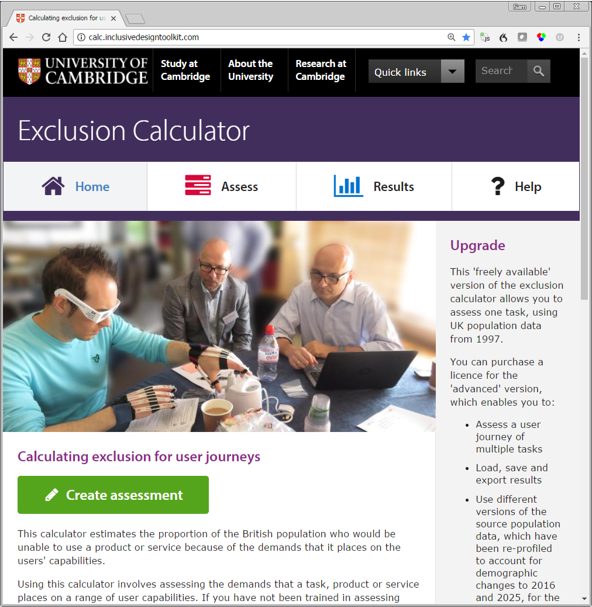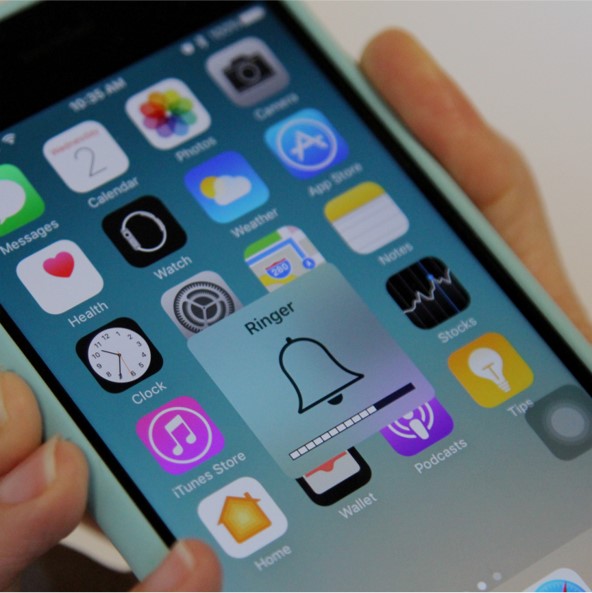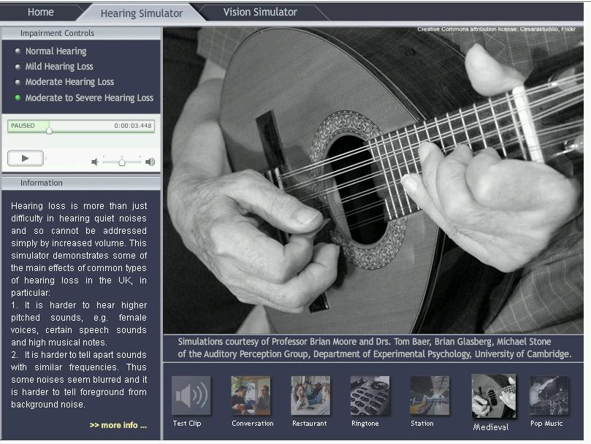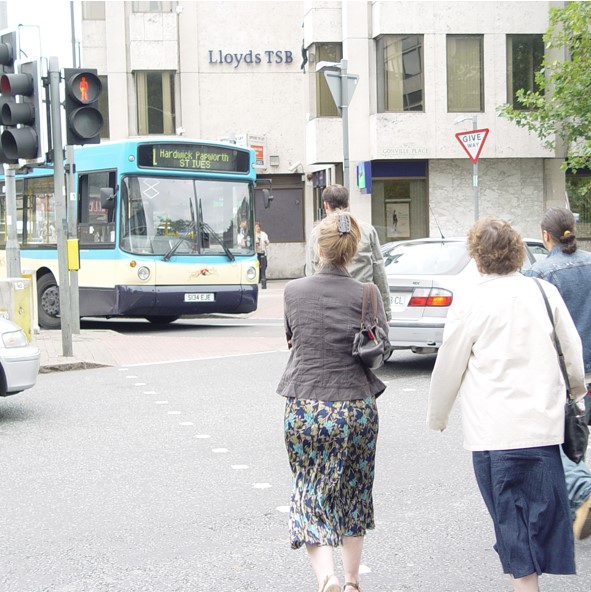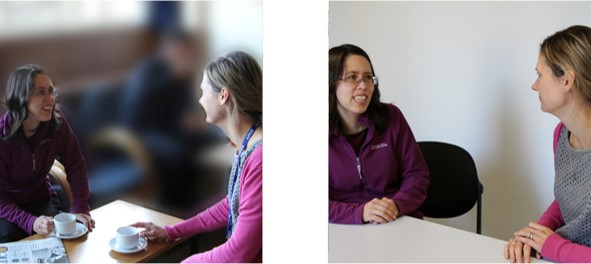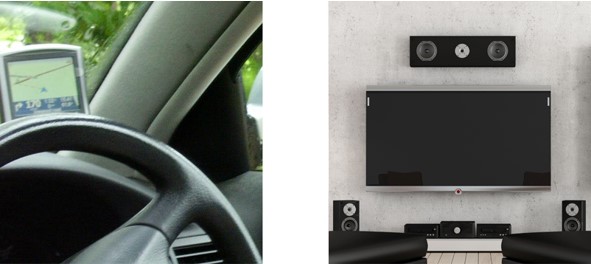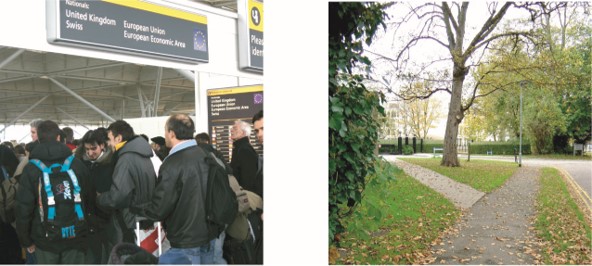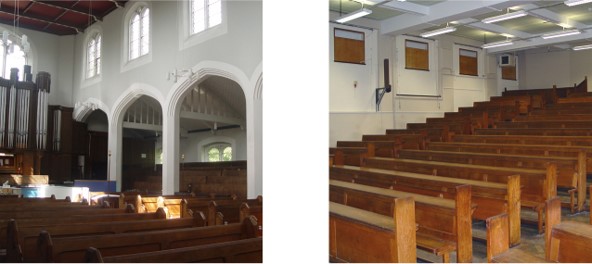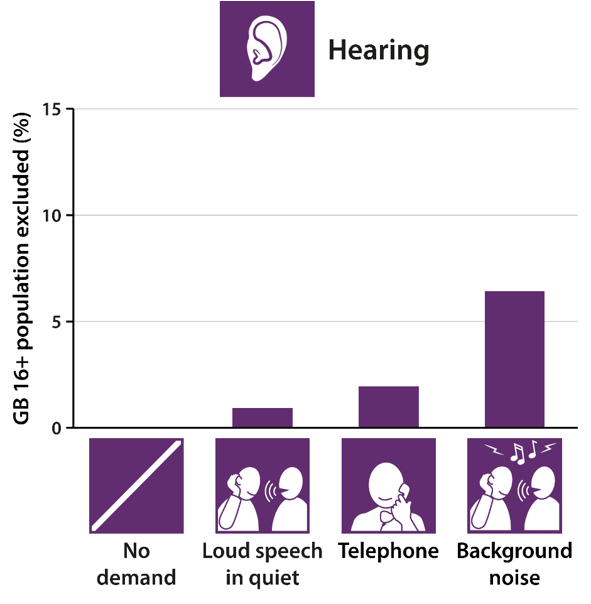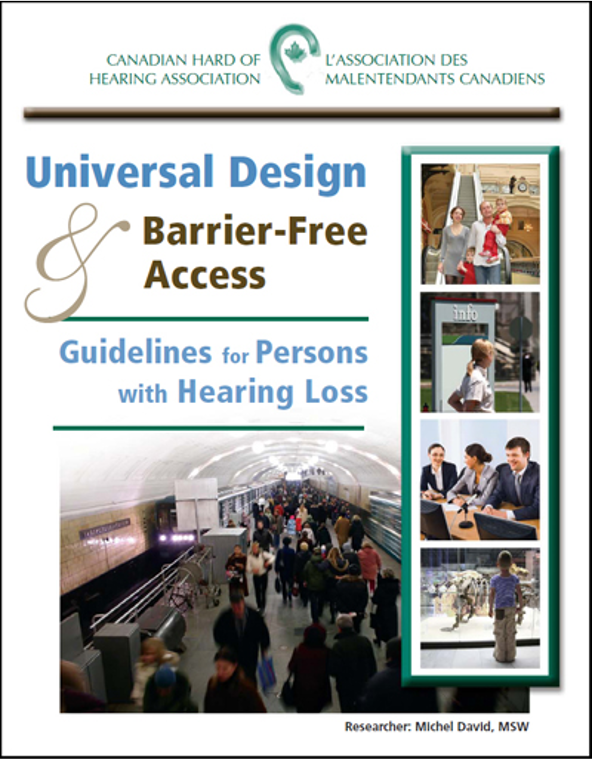Hearing is the ability to interpret sound vibrations. It is relevant to product interaction because sounds of various kinds are commonly used in products and services. These range from simple sounds such as beeps and tones to complex sounds such as speech and music. In many cases, these need be heard and decoded against background noise.
On this page:
Important note
This page highlights factors to consider when designing or assessing products, and provides some useful suggestions, but the advice should be followed within the context of an Inclusive design process.
Introduction
Hearing is the ability to interpret sound vibrations. In humans, these vibrations are picked up by the outer ear and transmitted to the cochlea in the inner ear. The cochlea converts them into neural impulses, which are then transmitted to the brain along the auditory nerve.
When blockages exist anywhere in the passage from the outer ear to the middle ear, they result in conductive hearing loss. This results in the loss of ability to hear faint sounds, and particularly those of high frequencies.
When the cochlea is affected by ageing or disease, it results in sensory neural hearing loss. This affects the quality of the sound detected and results in loss of ability to understand speech and discriminate various sounds, especially in the presence of noise. The ability to locate sounds also decreases with age, particularly for sounds with relatively low volume and short duration, such as the tones generated by watches.
Some general factors to consider when using sound in a product or service are to:
- Use multiple means. Think about assisting those with hearing impairments by supplementing information through visual or tactile means. However, be careful not to overload people with information and remember that a significant number of people with hearing problems also have difficulties with vision (1.8% of the GB population).
- Consider hearing aids. A significant proportion of the population use hearing aids. If your product makes heavy use of sound, consider providing inductive coupling to provide better quality sound for these people.
More detailed advice on specific aspects of auditory design is given below.
Statistics on the numbers of people in Great Britain with different levels of vision capability can be found by using the Exclusion Calculator at calc.inclusivedesigntoolkit.com.
Volume of sounds
The ease with which a sound can be heard depends on its intensity, which is perceived as loudness or volume.
Common types of hearing loss in the UK can make it difficult to hear quiet sounds. However, noises that are uncomfortably loud for a normal ear are often still uncomfortably loud to someone with hearing loss. Furthermore, volume levels that are too high can damage hearing, particularly if sustained over a long period of time.
Important things to consider in design are to:
- Provide adjustable volume. Provide adjustable volume levels where possible. Failing that, ensure sufficient loudness for the likely ambient noise level.
- Avoid very loud sounds. Take care to avoid sounds that are uncomfortably or dangerously loud.
- Consider volume customization. Consider enabling the user to customise the volume of individual auditory outputs, in addition to a general volume control.
Pitch and clarity
The ease with which a sound can be heard also depends on its frequency, which is perceived as pitch (how high or low the sound is). In order to detect a sound, it must within a frequency range that is audible to the listener.
Complex sounds such as speech and music contain a range of frequencies. In order to interpret such sounds, the user must be able to distinguish their parts, e.g. the different letter sounds in speech. This requires the sound to be sufficiently clear.
Common types of hearing loss in the UK can make it difficult to hear higher pitched sounds such as female voices, certain speech sounds and high musical notes. In addition, it is often harder for people with hearing loss to tell apart sounds with similar frequencies. Thus some noises seem blurred and it is harder to tell foreground from background noise.
Important things to consider in design are to:
- Avoid very high pitched sounds. Many people will have difficulty hearing these. Keeping the frequencies of beeps and tones within the range 800 to 1000 Hz will maximise the number of people able to detect them.
- Use good recording quality. Use sound recordings of good clarity and quality. Ensure that the sound components (e.g., words in speech) are easily distinguishable, particularly to people with a degree of hearing loss.
- Avoid using similar frequencies. Avoid using sounds of similar frequencies to indicate different things (e.g. different types of alarm on a reminder device). Some people may find these difficult to differentiate.
The hearing simulator in this toolkit illustrates how age-related hearing loss can make it more difficult to hear higher pitched sounds such as music from certain musical instruments.
Location of sounds
Sound localisation is the ability to determine the location of a sound. This is important when interacting with products that use sound to warn or to inform the user of their location. For example, the alarm on a reversing truck warns people of its presence and location. In another example, a user may use the ringtone on a mobile phone to help locate it.
Sound localisation works because a sound reaches one ear with a slightly higher intensity and fractionally before it reaches the other ear. The brain can use this information to work out where the sound is coming from. The ability to localise a sound therefore requires two functional ears, and this ability diminishes with performance reductions in either or both ears.
Some sounds are easier to locate than others. The sound of a classic ambulance siren is difficult to localise because it contains only two specific frequencies. White noise is the easiest to localise, as it has a broad frequency range. Sound localisation can also be assisted by using other outputs such as lights, motion or vibration.
If a product or service needs to inform people of its location, then important things to consider in design are to:
- Use multiple frequencies. Consider using sounds that contain multiple frequencies.
- Use multiple media. Consider augmenting sound with lights, motion or vibration.
Use of speech
Many products use speech output. Examples include telephones, cash machines and car navigation systems. Accessible technology for people with low vision often uses speech output as an alternative means of communicating information.
Speech sounds can be detected when they are sufficiently loud, but it can still be difficult to make out what is said, especially in the presence of background noise. Thus there are some factors that should be considered, in addition to the general points above.
Speech output can be pre-recorded and replayed or it can be synthesised. However, synthesised speech is often more difficult for older people to understand. Speech can use male or female voices. Generally female voices are of higher pitch and thus can be more difficult for some people to hear. Male voices are more likely to be within the range of hearing. Various accents and intonation can also affect how well speech is understood. Speech can also be difficult to understand if it is played at high speed.
Important things to consider in design are to:
- Use natural recorded speech. This is often easier to understand than synthesised speech.
- Avoid high pitched speech. Female voices are generally higher pitched then male voices and thus may be more difficult for some people to hear.
- Consider speech clarity. Use intonation, an appropriate word rate and clear pronunciation.
- Use good quality sound systems. Ensure that systems that transmit and reproduce speech do so with sufficient clarity.
Background noise and reverberation
Detecting sounds in the presence of noise is more difficult than detecting sounds in isolation. For example, hearing a phone conversation in a crowded restaurant or hearing a phone ring while the television is on require the ability to distinguish sounds from background noise. Most real world tasks take place with some level of ambient noise.
Background noise can be particularly problematic for those with hearing aids, as some hearing aids amplify the background noise indiscriminately. Induction or T-coil loops transmit sound directly to a hearing aid, which can be set to receive only this signal, thereby eliminating the background noise entirely.
Spaces that introduce large amounts of reflection and reverberation of sound can also cause problems with hearing. The sound becomes distorted and more difficult to discriminate from the background noise. This occurs in public spaces where announcements are important, such as train and underground stations, sports arenas and music halls. Increased reverberation affects people of all abilities, but affects those with reduced ability to a greater extent.
Important things to consider in design are to:
- Consider background noise. Consider the likely level of background noise when setting volume levels.
- Provide inductive couplings. Consider providing inductive couplings to assist those with hearing aids.
- Consider sound reflection. Contemplate sound reflection and reverberation when designing environments and spaces, and consider sound dampening for noise absorption.
Population statistics
The graph on the right shows the proportion of the British adult population living in private households who would be excluded by tasks with the following levels of hearing demand:
- No demand: No need to hear anything
- Loud speech in quiet: Understand loud speech in a quiet room
- Telephone: Use telephone without special adaptations for hearing impairment
- Background noise: Follow conversation against background noise
This graph was derived from the Disability Follow-Up to the 1996/97 Family Resources Survey, see the page on Assessing demand and exclusion for details. At the time of the survey, the GB adult population living in private households was 43.3 million.
Further information
Statistics on the numbers of people in Great Britain with different levels of hearing capability can be found by using the Exclusion Calculator at calc.inclusivedesigntoolkit.com.
Further information on hearing and hearing loss is available from the following sources:
- The American Speech-Language-Hearing Association website provides information on how we hear and on different types of hearing loss and hearing aids.
- The RNID website also provides information on hearing and hearing aids.
Hearing simulations also provide insight into the impact of hearing conditions:
- The Impairment simulator software in this toolkit includes a range of hearing simulations.
- UCL have produced HearLoss, a downloadable programme that allows the user to adjust a range of hearing parameters and hear the effect on their own audio files.
Further guidance on how to address hearing loss in design is available from:
- A booklet by the Canadian Hard of Hearing Association (2008): ‘Universal Design and Barrier-Free Access: Guidelines for Persons with Hearing Loss (pdf)’ is available for free from the website of the Canadian Hard of Hearing Association.
Guidelines for Persons with Hearing Loss, produced by the Canadian Hard of Hearing Association.
Feedback
We would welcome your feedback on this page:
Privacy policy. If your feedback comments warrant follow-up communication, we will send you an email using the details you have provided. Feedback comments are anonymized and then stored on our file server. If you select the option to receive or contribute to the news bulletin, we will store your name and email address on our file server for the purposes of managing your subscription. You can unsubscribe and have your details deleted at any time, by using our Unsubscribe form. If you select the option to receive an activation code, we will store your name and email address on our fileserver indefinitely. This information will only be used to contact you for the specific purpose that you have indicated; it will not be shared. We use this personal information with your consent, which you can withdraw at any time.
Read more about how we use your personal data. Any e-mails that are sent or received are stored on our mail server for up to 24 months.


